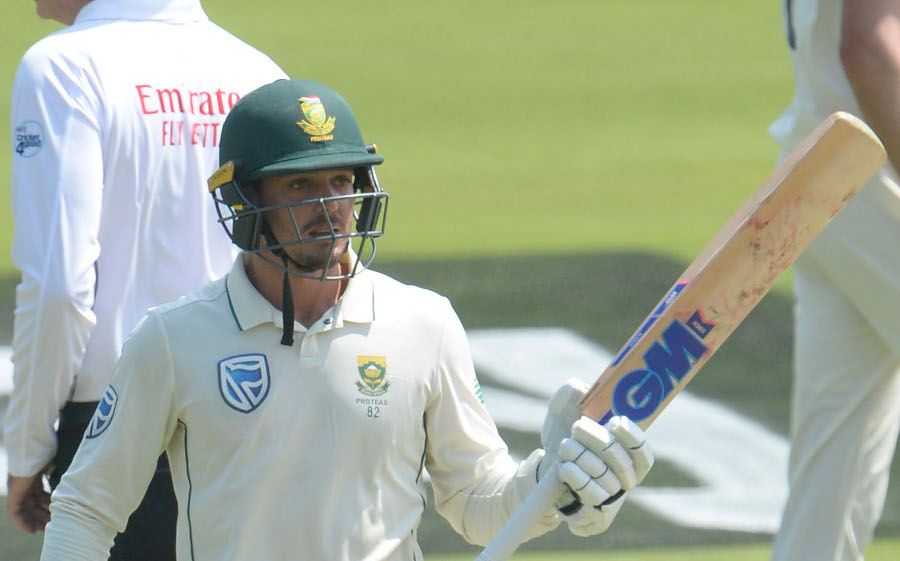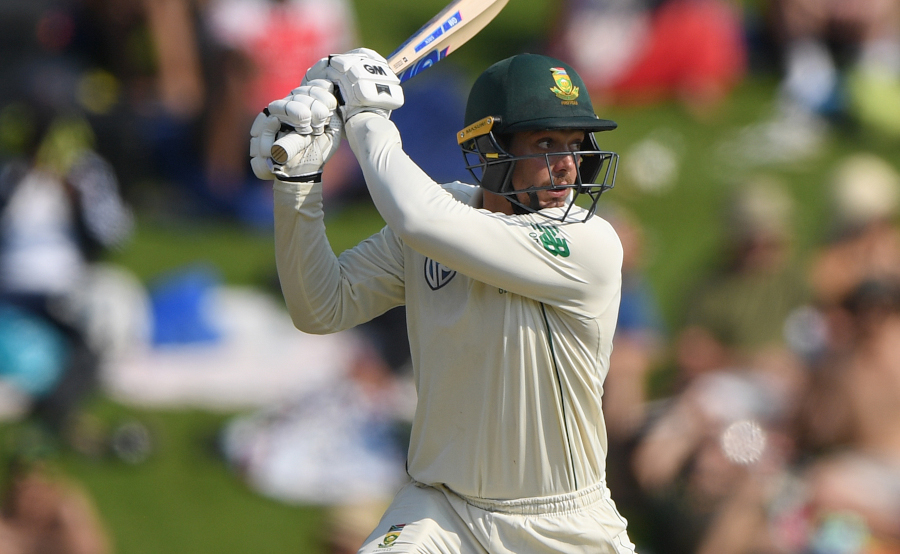When Sam Curran had Rassie van der Dussen caught at first slip in the 33rd over at SuperSport Park in Centurion, the scoreboard read 97-4 and South Africa were in trouble. Clearly Quinton de Kock hadn’t been paying attention.
The Proteas wicketkeeper-batsman saw out the remainder of the over with little fuss and then began his belligerence for the day.
The first ball of Curran’s next over was swatted nonchalantly to the cover boundary from the back foot. The next ball strayed on De Kock’s pads and was sent screaming to the midwicket fence. Two balls later, de Kock reached double figures with a violent slash backward of point.
The fall of captain Faf du Plessis, who was skilfully uprooted by Stuart Broad’s probing line around off stump, hardly seemed to register in De Kock’s mind, even though South Africa were teetering at 111-5.
New magazine issue: Why De Kock must bat at four
He simply kept playing his natural game and two hours and eight minutes after he first took guard, he had reached 95 off 128 balls before Curran drew an edge from a good length ball that moved away just enough off the deck.
The debate over De Kock’s best position is one that will gather pace throughout the South African summer. Some argue that he should be entrusted with more responsibility and move into the top four to add experience and stability.

There is no question that he is one of South Africa’s best batters. There is a strong case to be made that he is South Africa’s best. But why alter a recipe when it’s producing such sumptuous results?
Batting in the top five, De Kock averages just 28. Batting at six he averages 30. Batting at seven he thrums at an average of just under 50 per innings at a strike rate of 72. He has scored all five of his Test tons at this position between the specialist batters and the lower order.
The numbers all point to a player who enjoys the freedom of walking to the middle to front up against an older ball delivered by bowlers who have already put some yards on their legs.
It’s a win-win situation for South Africa with De Kock batting at six or seven. If things go well and the top order clicks, one of the most destructive hitters in the game has licence to tee off and throw his hands at the second new ball. If the top order struggles, as they did on Thursday, one of the most destructive hitters in the game can counter-punch and shift momentum back into his team’s favour.
No one ever argued that Adam Gilchrist needed to bat higher up the order when the Australian was rewriting the manual for wicketkeeper-batsmen. Granted, he had one of the greatest top orders laying a foundation for his free-flowing approach, but his ability to turn a competitive total into an unbeatable one ensured Glenn McGrath, Shane Warne and company could attack without restraint.
‘I’ve batted in every position in the team,’ was De Kock’s simple answer when asked where he would prefer to bat. ‘With Faf and Rassie, and now Dwaine, there is a good balance to the team. We’ll see what happens in the future.’
De Kock wasn’t always fluent in this latest bash. A large bulk of his runs were procured from the outer edges of his bat and he could have been dismissed three times by Joe Root’s part-time off-spin – skying one between mid-on and mid-off, edging one just short of first slip, spooning one with a strange paddle off the outside of the blade that landed safely on the off-side. But otherwise he was imperious.
Few batters in the world pack as much power when cutting. Because of his slight frame and whiplash wrists, he is able to direct balls behind square that most contemporaries would be better straight-batting bunting towards cover.
Through midwicket he is majestic. Crouching low like a cat before recoiling with the fierce grace of an apex predator on the hunt, he wallops anything that has the temerity to drift into his body on a full length.
He reached his half-century off 45 balls. His next 45 runs came with a more caution as he recognised the importance of converting his early gains.
A sixth Test century was cruelly denied him by Curran, who finished the day with 4-57. De Kock walked off the field acknowledging the warm applause, but will no doubt be slightly annoyed with himself that he couldn’t reach three figures.
Either way, his positive mindset and good fortune, rescued a dire situation for his side who now have something to work with over the next four days after South Africa reached 277-9 at the close of play.
Daniel Gallan in Centurion







